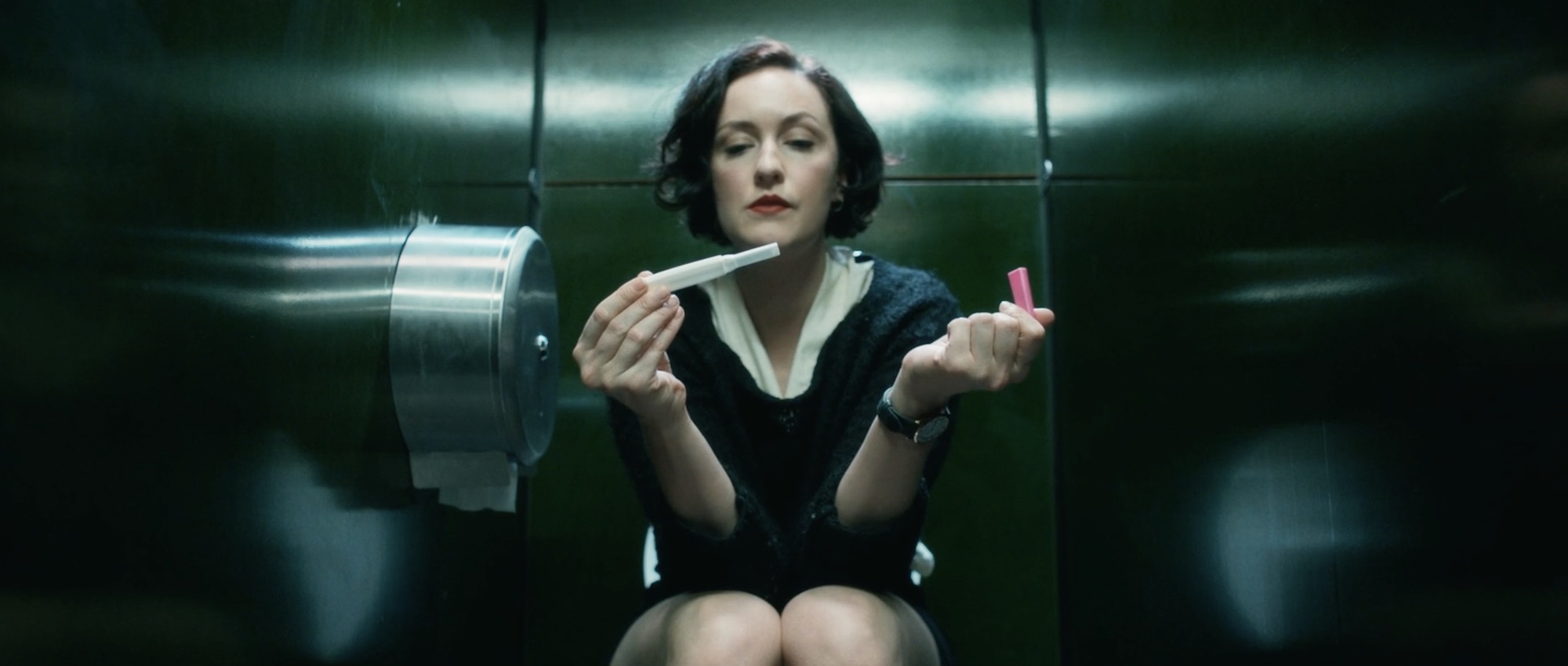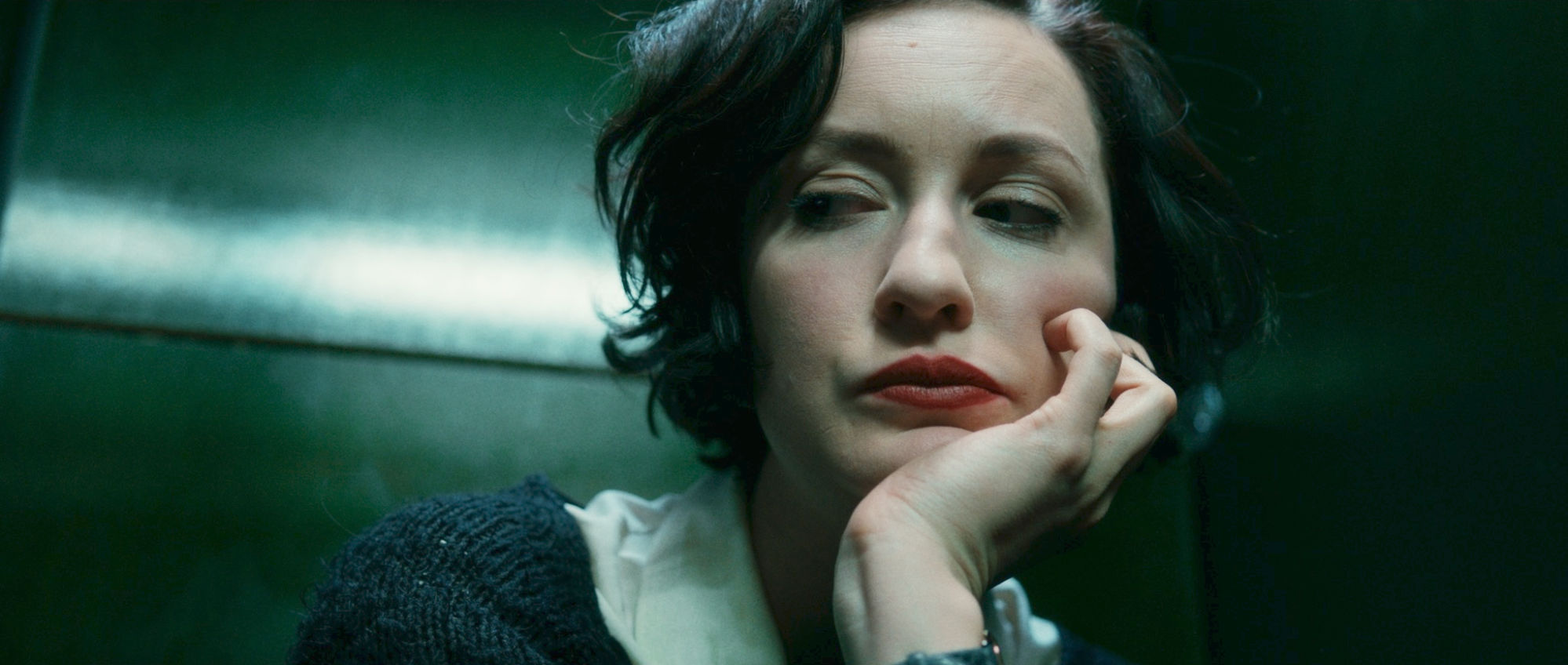
Director Chloë Wicks’ short horror Cubicle is another great example of utilising your resources to their full potential and the creative benefit of restrictions. Shot in one day on a budget of £160, Cubicle tells the story of a young woman taking a pregnancy test only to be interrupted by, what seems to be, a man and a woman getting up to some risky business. From there, Cubicle ventures into the uncomfortable, and in its brief runtime sinks its hooks in and doesn’t let you go. Making its online premiere today, Wicks joins us on DN for a chat about working on a restricted budget and tight timescale, all within the cramped confines of a bathroom stall.
How did you come up with the initial idea for Cubicle?
A brilliant writer friend Stefan Kaday and I had been discussing ideas for a while. We’d written a TV idea that hadn’t been picked up, so we started talking about more makeable ideas for short films instead – specifically, some kind of horror short that would have a snappy running time of less than 5 minutes. The concept for and making of Cubicle happened quite quickly.
We’re both really interested in parenthood/pregnancy and the anxieties that surround that. I’ve been wanting to make a short for a while about someone taking a pregnancy test, just because it’s such a charged moment – whether you want a baby or not. Culturally it’s become kind of caricatured, like a shorthand for a major, life-changing fork in the road. Stef came up with a more fun, twisted idea than the comedy/drama versions I’d been mulling over.
I was keen to make the character look vulnerable and cornered.
I love that shift from comedy to horror at the beginning of the film, it’s played so beautifully by Charlotte Hamblin. Was it always set out that way and did much change in the script from its first inception to production?
Yes, our intention with the film was always to start from a place of uneasy comedy and then shift into horror. Charlotte has a lot of natural comedy about her so she was the perfect actor to navigate that shift. In terms of the script changing, I think initially the character never left the cubicle. We were intrigued to extend it beyond that confined space so that it became more of an investigation into her mind, playing with what she thought was going on outside her cubicle, only to then suggest to her that she might be imagining it – and then to flip it again at the end.

How did you work with Charlotte to develop her performance? There’s next to no dialogue in the film, did that prove much of a challenge?
Charlotte is fantastic and completely got the tone of it, so the focus was just in shaping what each moment needed to tell us on a story level because all the action takes place outside the cubicle and she had basically nothing to react to. We’d do a long take with me standing a few feet away, narrating the timing of the various noises that were happening so that she could react to them. It was like being a conductor for an orchestra or something, quite bizarre and fun.
One of the hardest things about the performance was actually continuity. In such a confined space, it was starkly obvious if an arm was in a slightly different position or if her hand was touching the wall or if the pregnancy test was the wrong way up or if the toilet roll was hanging down longer than before. We had a tiny crew of six people with no art department or costume or hair/make-up (basically we just had camera and sound) so it was a group effort trying to keep an eye on the length of the loo roll and Charlotte’s physical positions!
Did you have many visual or thematic inspirations, certain filmmakers or films?
Quite random, but I took inspiration from the film Amelie visually, particularly the colour scheme. I also love the ghoulish greens of Fincher’s work. To be honest though, the biggest visual inspiration was actually the toilet location itself, which feels funny to say as it’s not very highbrow. But as soon as I saw the shiny, greens of the walls and the red lights outside it, it felt immediately suggestive of the heightened, dark tone we wanted to achieve.
I also thought there might be something creepier about presenting this young woman as a fairly timeless character, someone with visual echoes of another era. So with Charlotte’s short curly hair, red lipstick, clothing, old leather handbag and shoes – it all gave the film that old fashioned vibe, whilst still being set in the present day.

I read that the film was shot in one day on a budget of £160. What restraints or advantages did this give you?
I think often when you’re making shorts, it’s understandable to want to make something big and ambitious to show that you can handle lots of actors, locations, practical challenges, slick camera moves – that basically you’re ready to make a feature. You can spend too long waiting for funding or a starry actor and lose sight of the original impulse to make the film or your tastes change. Instead, we decided on our parameters – one day, one location, one main actor who would be a friend, less than £200 – and stuck to that. I think if you hit upon the right idea and make strong aesthetic choices so that the piece feels specific and authored, then it doesn’t matter how much or little money you spend on it. So much interesting work has been made in restricted environments – the pandemic has shown that more than ever.
Budget/space/actor limitations feel like a really good route into being creative.
I also just really love short, small shoots. You get this intense burst of creative energy and the stakes are low, so you feel freer to be bold and make something weird. If it’s bad, you can put it in the bin – which I did actually do with another short several years ago. Budget/space/actor limitations feel like a really good route into being creative, even when you’re conceiving of bigger or longer. And I really like obeying unities of time, place, action; I think it suits short films as a medium.

What was your approach to constructing the visuals of Cubicle? The whole film is set in such a confined space, how did you plan where to put the camera?
With the cinematography, the very talented DOP Simon Rowling used a wide-angle lens for all of it so that we could enlarge the space and make Charlotte’s character feel isolated. We took the cubicle door off its hinges so that we could place the camera on sticks in the door frame. I was keen to make the character look vulnerable and cornered so we constructed a shot from above so it felt like she was being spied on, plus shots of her legs and feet looking exposed too.
What’s in store for you in the future, in regards to new projects?
I’m working on a few different things: developing two features projects, writing a pilot script for Sky Drama for a six-part thriller series and I’m about to start prep to direct one of Channel 4’s On the Edge episodes for 4Stories, which is an emerging talent scheme that I’m really grateful to be part of. The writer of Cubicle Stefan is working on a number of exciting projects too, several of them horror, so please do check him out. @StefKaday


